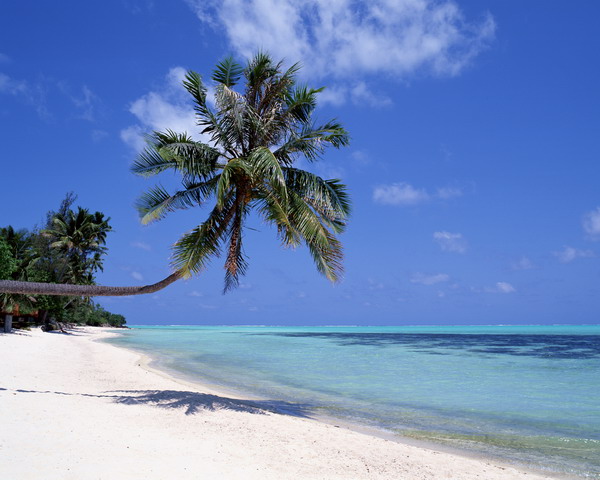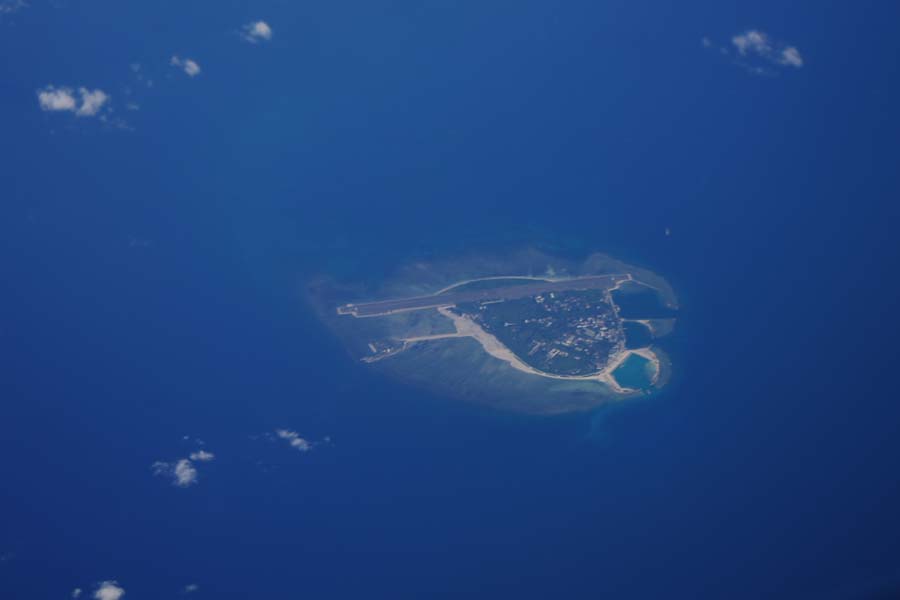Han Dynasty(206BC-220AD)
According to historical records, as early as the 2nd century BC, during the reign of Emperor Wu of the Han Dynasty, the Chinese people had already conducted navigation on the South China Sea. And they had discovered Xisha Qundao and Nansha Qundao in their long-time navigation and production practices.
In the early 2nd century, Yi Wu Zhi (Annals of Unusual Things) by Yang Fu, recorded that "around the Qitou of Zhanghai (literally means the sea of rising tides), the water is shallow, and it is abundant in lodestones". Therein, Zhanghai was how the Chinese people called the South China Sea back then. It was so named because of the frequent occurrence of rising tides there. And Qitou referred to the islands, reefs, cays and shoals of Nanhai Zhudao including Xisha Qundao and Nansha Qundao.
The Period of the Three Kingdoms(AD220-280)
In Nan Zhou Yi Wu Zhi (Annals of Unusual Things from the Southern Regions) by Wan Zhen, the prefecture chief of Danyang in the State of Wu during the Three Kingdoms Period, and it gave an account of the navigation routes from Malaya to Chinese mainland in the Han Dynasty. And the narration went as "...to the northeast, a very huge Qitou emerges from Zhanghai, wherein the water is shallow and abundant in lodestones." Herein, the lodestones refer to the then-still-submerged shoals and reefs in Nanhai Zhudao. They were called as lodestones because ships that ran into these submerged reefs would be stranded, unable to move away.
In the early 3rd century, Kang Tai and Zhu Ying, generals of the State of Wu were dispatched to neighboring kingdoms such as Funan (today's Cambodia and its surrounding area). In Fu Nan Zhuan (An Account of Funan) written by them, it gave a very accurate description on the form of Nanhai Zhudao as well as its causes of formation as follows: "in Zhanghai, to the corals shoal, there is Pangaea at the bottom of the shoal, upon which the corals grow".
Tang Dynasty(618-907)
789AD (the 5th year of Emperor Zhenyuan's reign of the Tang Dynasty): according to what Zhao Rushi, supervisor of Maritime Trade Bureau of Quanzhou, Fujian in the Southern Song Dynasty recorded in his book Zhu Fan Zhi (Annals of Foreign Countries) written in the year 1225, "...in the 5th year of Emperor Zhenyuan's reign of Tang Dynasty, Qiongzhou was established as Du Fu (a commandery), and today this practice carries on as befo...to Jiyang (today's Sanya City), it is the border of the sea, neither lands nor intertidal zones can be found here. [Beyond the port of Quanzhou,] there are two islands, one called Wuli and the other Sujilang. To the south, there lies Champa; to the west, Chân Lạp. To the east, there are thousands of li's Changsha and Shichuang where the sea and the sky merge." It recorded that today's Hainan was set up as a Commandery in the Tang Dynasty, and a description on Nanhai Zhudao was given therein.
Song Dynasty(960-1279)
1044AD (the 4th year of Emperor Qingli's reign of the Song Dynasty): in Wu Jing Zong Yao (Outline Record of Military Affairs) with an introduction by Emperor Renzong of Northern Song Dynasty, it records that the imperial court of Northern Song Dynasty "ordered the imperial army to garrison the border, and established barracks for the sea-patrolling naval forces" in Guangnan (today's Lingnan area), "stored salted fishes in the naval ships", "moved towards southwest from Tunmen Mountain using the east wind, and arrived Jiuru Luozhou (today's Xisha Qundao) within seven days". It demonstrated that the imperial court of the Northern Song Dynasty had included Xisha Qundao into its jurisdiction, and sent naval "battle ships" to patrol there.
1225AD (the 1st year of Emperor Baoqing's reign of the Song Dynasty): in the forewords of Zhu Fan Zhi (Annals of Foreign Countries) written by Zhao Rushi, supervisor of Maritime Trade Bureau of Quanzhou, Fujian of the Southern Song Dynasty, it mentioned about a chart marking out Nanhai Zhudao, Zhu Fan Tu (A Map of Foreign Countries), and said that this map "has marked out the strategically important places such as the so-called Shichuang/tang (rocky reefs) and Changsha (long sand cays)".
Yuan Dynasty(1206-1368)
1293AD (the 30th year of Emperor Zhiyuan's reign of the Yuan Dynasty): according to the records of History of Yuan Dynasty-the Biography of Shi Bi, in the early 30th year of Zhiyuan reign, Shi Bi, a general of the Yuan Dynasty led ten hundreds of naval ships, "starting from Quanzhou...across Qizhouyang, Wanli (ten thousand li) Shitang, and passed by the boundary of Jiaozhi and Champa". It documented the naval forces of Yuan Dynasty had carried out patrol mission and exercised jurisdiction over Nanhai Zhudao.
1349AD (the 9th year of Emperor Zhizheng's reign of the Yuan Dynasty): in Dao Yi Zhi Lüe (Brief Annals of Foreign Islands) written by Wang Dayuan, a navigator of the Yuan Dynasty, it recorded that "The skeleton of Shitang originated from Chaozhou. Meandering like a serpent across the vast sea, and passing many a maritime country, it is commonly called Wanli Shitang (ten thousand-li rocky reefs)... the geographical position is readily intelligible. In one direction, it spreads to Java. In a second one, it spreads to Borneo and Timor. In a third one, it spreads to the land of Kunlun (refers to China) region beyond the Western Ocean." Herein, the "Wanli Shitang" refers to Nanhai Zhudao including Nansha Qundao.
Ming Dynasty(1368-1644)
In 1402AD, in the Hun Yi Jiang Li Li Dai Guo Du Zhi Tu (A Universal Map Marked with the Capitals of Different Times) drew by a Korean named Li Hui based on the maps of the Yuan Dynasty of China, it marked the names of Shitang, Changsha and Shitang successively in the South China Sea from northeast to the southwest. Judging by the locations marked in the map, the first Shitang refers to Dongsha Qundao, Changsha refers to Xisha Qundao, and the second Shitang refers to Nansha Qundao.
In 1403AD (the 1st year of Emperor Yongle's reign of the Ming Dynasty), a book titled Shun Feng Xiang Song (Bon Voyage with a Tail Wind) has records about China's maritime navigation activities as well as the islands en route, which goes as "when the ship approaches the Wailuo Port, heads towards it, and continues to sail eastwards for 7 Jing (14 hours), and you will arrive at the Wanli Shitang. Within it, there is a red rock islet, which is not high." The "Wanli Shitang" herein refers to Xisha Qundao.
1405AD~1433AD (from the 3rd year of Emperor Yongle’s reign to the 8th year of Emperor Xuande's reign of the Ming Dynasty): Zheng He went to the west ocean for 7 times. In the famous Zheng He Navigation Chart, originally called as The Map of Treasure-ship Fleet Sailing to Barbarian Countries from Longjiangguan Pass, more than 500 difference place names were explicitly marked out. Among them, about 200 places belong to part of China’s territory. And it marked The South China Sea Islands respectively as "Shitang", "Wansheng Shitangyu" and "Shixing Shitang".
Around 1511AD (the 6th year of Emperor Zhengde's reign of the Ming Dynasty), the book Qiong Tai Wai Ji (An Apocryphal Chorography of Qiongtai, today’s Hainan) recorded that, "the Changsha and Shitang to the east of (Wan) Zhou are lands encompassed by the sea. Every time when the strong typhoon strikes, the tides rise, the houses will be flooded over and the farmlands be inundated. Either gains or losses are for the people to get or suffer." It demonstrated that at that time, the fishermen in China not only had used Nanhai Zhudao as a base for fishery production, but also had built houses and reclaimed farmlands on the island to carry out agricultural production there.
1521AD (the 16th year of Emperor Zhengde's reign of the Ming Dynasty): in the entry of "territory" in the book Zheng De Qiong Tai Zhi (Chorography of Qiongtai during the Emperor Zhengde's Reign) compiled by Tang Zou, it recorded that "and to the east of Qiongtai, surrounded by the sea, there are Qianli Changsha (ten hundred li's long sand cays) and Wanli Shitang (ten thousand li's rocky reefs)". It was clearly stated that Xisha Qundao and Nansha Qundao were within the territorial scope of China.
1617AD (the 45th year of Emperor Wanli's reign of the Ming Dynasty): in the book Dong Xi Yang Kao (Studies on the Ocean East and West) compiled by Zhang Xie, it recorded that "it is extremely dangerous for ships to pass through this place. Moving slightly eastwards, there is the Wanli Shitang". The "Wanli Shitang" herein refers to Xisha Qundao.
In 1637AD (the 10th year of Emperor Chongzhen of the Ming Dynasty), the Wu Bei Mi Shu Di Li Fu Tu (Attached Maps of Favorable Geographical Positions for Armaments and Military Secretary) compiled by Shi Yongtu had explicitly included Nanhai Zhudao into China's territory.
The Hai Nan Wei Zhi Hui Qian Shi Chai Gong Mu Zhi Ming (Epitaph of General Chai, Military Commander of Hainan Wei) of the Ming Dynasty recorded that, "Guangdong is close to the sea, all the neighboring kingdoms overseas are our affiliated kingdoms", "His Honor commands more than ten thousand soldiers, and 50 large ships", to patrol "tens of thousands li's seaway". It revealed that in the Ming Dynasty, the Hainan Wei had already carried out patrolling mission and exercised jurisdiction over Xisha Qundao, Zhongsha Qundao as well as Nansha Qundao.
The book Jing Lu Bu (Book of Seaways) is a navigation guidebook used by the Chinese fishermen while carrying out fishery production since the Ming and Qing Dynasties. It recorded the compass bearing and number of Jing (1 jing equals to 2 hours) of the fishermen's navigation among the different islands and reefs of Xisha Qundao and Nansha Qundao. In this book, it gave an account of more than 70 place names of Nansha Qundao habitually used by fishermen of Hainan as well as their specific locations. And it had recorded more than 100 different Jing Lu (seaways) among different islands and reefs of Nansha Qundao.















